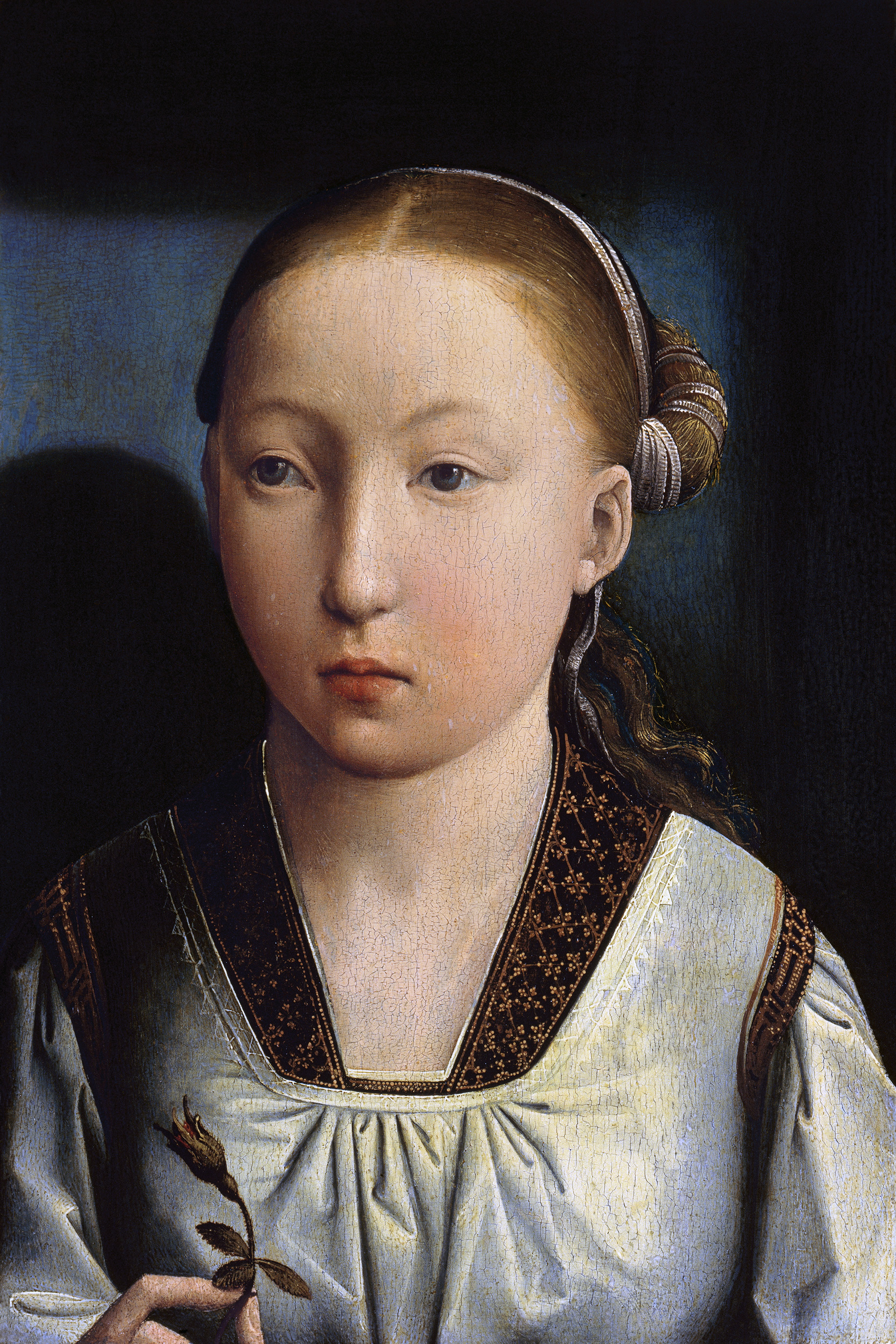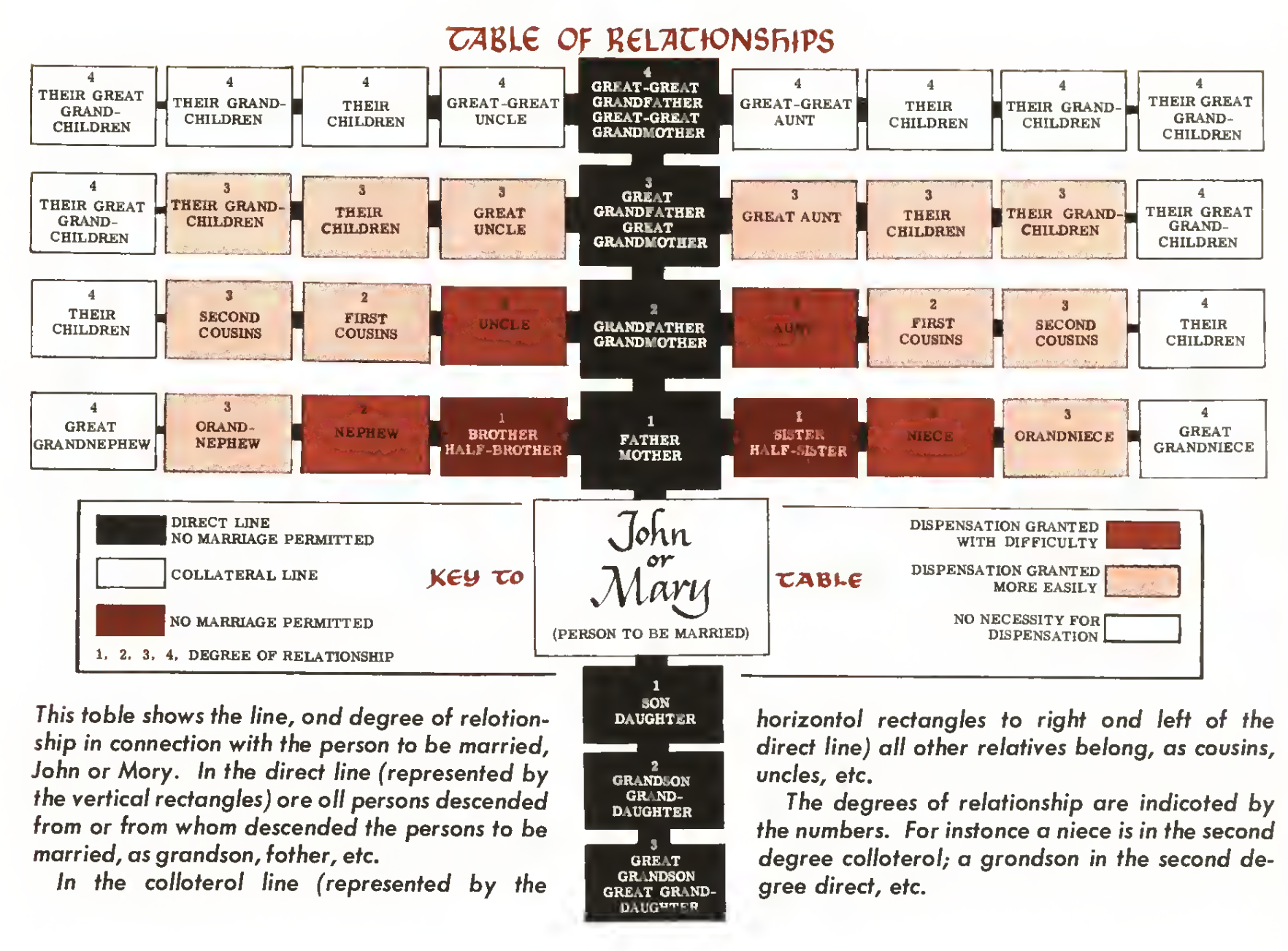|
Annulment (Catholic Church)
In the Catholic Church, a declaration of nullity, commonly called an annulment and less commonly a decree of nullity, and in some cases, a Catholic divorce, is an ecclesiastical tribunal determination and judgment that a marriage was invalidly contracted or, less frequently, a judgment that ordination was invalidly conferred. A matrimonial nullity trial, governed by canon law, is a judicial process whereby a canonical tribunal determines whether the marriage was void at its inception (). A "Declaration of Nullity" is not the dissolution of an existing marriage (as is a dispensation from a marriage '' ratum sed non consummatum'' and an "annulment" in civil law), but rather a determination that consent was never validly exchanged due to a failure to meet the requirements to enter validly into matrimony and thus a marriage never existed. The Catholic Church teaches that, in a true marriage, one man and one woman become "one flesh" before the eyes of God. Various impediments can ... [...More Info...] [...Related Items...] OR: [Wikipedia] [Google] [Baidu] |
Catholic Church
The Catholic Church (), also known as the Roman Catholic Church, is the List of Christian denominations by number of members, largest Christian church, with 1.27 to 1.41 billion baptized Catholics Catholic Church by country, worldwide as of 2025. It is among the world's oldest and largest international institutions and has played a prominent role in the history and development of Western civilization.Gerald O'Collins, O'Collins, p. v (preface). The church consists of 24 Catholic particular churches and liturgical rites#Churches, ''sui iuris'' (autonomous) churches, including the Latin Church and 23 Eastern Catholic Churches, which comprise almost 3,500 dioceses and Eparchy, eparchies List of Catholic dioceses (structured view), around the world, each overseen by one or more Bishops in the Catholic Church, bishops. The pope, who is the bishop of Rome, is the Papal supremacy, chief pastor of the church. The core beliefs of Catholicism are found in the Nicene Creed. The ... [...More Info...] [...Related Items...] OR: [Wikipedia] [Google] [Baidu] |
Putative Marriage
A putative marriage is an apparently valid marriage, entered into in good faith on the part of at least one of the partners, but that is legally invalid due to a technical impediment, such as a preexistent marriage on the part of one of the partners. Unlike someone in a common-law, statutory, or ceremonial marriage, a putative spouse is not legally married. Instead, a putative spouse believes themself to be married in good faith and is given legal rights as a result of this person's reliance upon this good-faith belief. Putative marriages exist in both Catholic canon law and in various civil laws, though the rules may vary. In some jurisdictions, putative marriages are a matter of case law rather than legislation. In many jurisdictions, under civil law, the marriage becomes valid if the impediment is removed. If it is not removed, the innocent spouse, at least, is often entitled to the protections of a divorce for division of property and child custody. Catholic canon law ... [...More Info...] [...Related Items...] OR: [Wikipedia] [Google] [Baidu] |
Henry VIII Of England
Henry VIII (28 June 149128 January 1547) was King of England from 22 April 1509 until his death in 1547. Henry is known for his Wives of Henry VIII, six marriages and his efforts to have his first marriage (to Catherine of Aragon) annulled. His disagreement with Pope Clement VII about such an annulment led Henry to initiate the English Reformation, separating the Church of England from papal authority. He appointed himself Supreme Head of the Church of England and dissolution of the monasteries, dissolved convents and monasteries, for which he was List of people excommunicated by the Catholic Church, excommunicated by the pope. Born in Greenwich, Henry brought radical changes to the Constitution of England, expanding royal power and ushering in the theory of the divine right of kings in opposition to papal supremacy. He frequently used charges of treason and heresy to quell dissent, and those accused were often executed without a formal trial using bills of attainder. He achi ... [...More Info...] [...Related Items...] OR: [Wikipedia] [Google] [Baidu] |
Catherine Of Aragon
Catherine of Aragon (also spelt as Katherine, historical Spanish: , now: ; 16 December 1485 – 7 January 1536) was List of English royal consorts, Queen of England as the Wives of Henry VIII, first wife of King Henry VIII from their marriage on 11 June 1509 until its annulment on 23 May 1533. She was Princess of Wales while married to Henry's elder brother, Arthur, Prince of Wales, for a short period before his death. Catherine was born at the Archbishop's Palace of Alcalá de Henares, and was the youngest child of Isabella I of Castile and Ferdinand II of Aragon. She was three years old when she was betrothed to Arthur, the eldest son of Henry VII of England. They married in 1501, but Arthur died five months later. Catherine spent years in limbo, and during this time, she held the position of ambassador of the Aragonese crown to Kingdom of England, England in 1507, the first known female ambassador in European history. She married Henry VIII shortly after his accession i ... [...More Info...] [...Related Items...] OR: [Wikipedia] [Google] [Baidu] |
Affinity (Catholic Canon Law)
In Catholic canon law, affinity is an impediment to marriage of a couple due to the relationship which either party has as a result of a kinship relationship created by another marriage or as a result of extramarital intercourse. The relationships that give rise to the impediment have varied over time. Marriages and sexual relations between people in an affinity relationship are regarded as incest. Today, the relevant principle within the Catholic Church is that "affinity does not beget affinity"—i.e., there is no affinity between one spouse's relatives and the other spouse's relatives. Canon 109 of the '' Code of Canon Law'' of the Catholic Church provides that affinity is an impediment to the marriage of a couple, and is a relationship which "arises from a valid marriage, even if not consummated, and exists between a man and the blood relatives of the woman and between the woman and the blood relatives of the man." Also, affinity "is reckoned in such a way that the blood re ... [...More Info...] [...Related Items...] OR: [Wikipedia] [Google] [Baidu] |
Consanguinity
Consanguinity (from Latin '':wikt: consanguinitas, consanguinitas'' 'blood relationship') is the characteristic of having a kinship with a relative who is descended from a common ancestor. Many jurisdictions have laws prohibiting people who are closely related by blood from Consanguine marriage, marrying or having sexual relations with each other. The degree of relationship, degree of consanguinity that gives rise to this prohibition varies from place to place. On the other hand, around 20% of the global population lives in areas where some consanguinous marriages are preferred. The degree of relationships are also used to determine heirs of an estate according to statutes that govern intestacy, intestate succession, which also vary from jurisdiction to jurisdiction. In some communities and time periods, cousin marriage is allowed or even encouraged; in others, it is taboo, and considered to be incest. The degree of relative consanguinity can be illustrated with a ''consanguinity ... [...More Info...] [...Related Items...] OR: [Wikipedia] [Google] [Baidu] |
Impediment Of Crime
In the canon law of the Catholic Church, an impediment is a legal obstacle that prevents a sacrament from being performed either validly or licitly or both. The term is used most frequently in relationship to the sacraments of Marriage and Holy Orders. Some canonical impediments can be dispensed by the competent authority (usually the local ordinary but some impediments are reserved to the Apostolic See) as defined in Catholic canon law. Impediments to marriage Roman Catholic sacramental theology teaches that the ministers of the sacrament of holy matrimony are the man and woman, and therefore any marriage contracted voluntarily between two baptized and unmarried adults is valid, though under ordinary circumstances the marriage must be witnessed by clergy to be licit. However, various provisions in current canon law outline extraordinary circumstances that would form impediments to marital validity. Validity vs. liceity The validity of an action is distinguished from its b ... [...More Info...] [...Related Items...] OR: [Wikipedia] [Google] [Baidu] |
Raptus
{{wiktionary, raptus Raptus is the Latin for "seized", from ''rapere'' "to seize". In Roman law the term covered many crimes of property, and women were considered property. It may refer to: *any literal seizure **confiscation **robbery **kidnapping ** raptio, i.e. the abduction of women, also known as ''Frauenraub''; these are the "rapes of Zeus". **the term for bride kidnapping in Catholic canon law **rape in medieval English law *medical **seizure **epileptic seizure **stroke **convulsion **focal seizure *in religion, spirituality and subjective experience **rapture, a Protestant belief about the End Times and the transport of redeemed souls **''status raptus'', religious ecstasy ** being "carried away" or "transported", being in good spirits, see Ecstasy (emotion) **out-of-body experience See also *Rape *History of rape The concept of rape, both as an abduction and in the sexual sense (not always distinguishable), makes its appearance in early religious texts. Scholars o ... [...More Info...] [...Related Items...] OR: [Wikipedia] [Google] [Baidu] |
Bride Kidnapping
Bride kidnapping, also known as marriage by abduction or marriage by capture, is a practice in which a man abducts the woman he wishes to marry. Bride kidnapping (hence the portmanteau bridenapping) has been practiced around the world and throughout prehistory and history, among peoples as diverse as the Hmong in Southeast Asia, the Tzeltal in Mexico, and the Romani in Europe. Bride kidnapping still occurs in various parts of the world, but it is most common in the Caucasus, Central Asia and some parts of Africa. In most nations, bride kidnapping is considered a sex crime because of the implied element of rape, rather than a valid form of marriage. Some types of it may also be seen as falling along the continuum between forced marriage and arranged marriage. The term is sometimes confused with elopements, in which a couple runs away together and seeks the consent of their parents later. In some cases, the woman cooperates with or accedes to the kidnapping, typically in ... [...More Info...] [...Related Items...] OR: [Wikipedia] [Google] [Baidu] |
Religious Institute
In the Catholic Church, a religious institute is "a society in which members, according to proper law, pronounce public religious vows, vows, either perpetual or temporary which are to be renewed, however, when the period of time has elapsed, and lead a life of brothers or sisters in common." A religious institute is one of the two types of institutes of consecrated life; the other is the secular institute, where its members are "living in the world". Religious institutes come under the jurisdiction of the Dicastery for Institutes of Consecrated Life and Societies of Apostolic Life. Description A member of a religious institute lives in community with other members of the institute and observes the three evangelical counsels of chastity, poverty, and obedience, which they bind themselves to observe by public vows. Classification Since every religious institute has its own unique charism#Religious meaning, charism, it adheres to a particular way of religious living whethe ... [...More Info...] [...Related Items...] OR: [Wikipedia] [Google] [Baidu] |
Vow Of Chastity
Chastity, also known as purity, is a virtue related to temperance. Someone who is ''chaste'' refrains from sexual activity that is considered immoral or from any sexual activity, according to their state of life. In some contexts, for example when making a vow of chastity, chastity means celibacy. Etymology The words ''chaste'' and ''chastity'' stem from the Latin adjective ("cut off", "separated", "pure"). The words entered the English language around the middle of the 13th century. ''Chaste'' meant "virtuous", "pure from unlawful sexual intercourse" or (from the early 14th century on) as a noun, a virgin, while ''chastity'' meant "(sexual) purity". Thomas Aquinas links (chastity) to the Latin verb ("chastise, reprimand, correct"), with a reference to Aristotle's ''Nicomachean Ethics'': "Chastity takes its name from the fact that reason 'chastises' concupiscence, which, like a child, needs curbing, as the Philosopher states". In Abrahamic religions For many Jews, Chri ... [...More Info...] [...Related Items...] OR: [Wikipedia] [Google] [Baidu] |
Holy Orders
In certain Christian denominations, holy orders are the ordination, ordained ministries of bishop, priest (presbyter), and deacon, and the sacrament or rite by which candidates are ordained to those orders. Churches recognizing these orders include the Catholic Church, the Eastern Orthodoxy, Eastern Orthodox (ιερωσύνη [''hierōsynē''], ιεράτευμα [''hierateuma''], Священство [''Svyashchenstvo'']), Oriental Orthodoxy, Oriental Orthodox, Anglican, Assyrian Church of the East, Assyrian, Old Catholic, Independent Catholic churches, Independent Catholic and some Lutheran churches. Except for some Lutherans and some Anglicans, these churches regard ordination as a sacrament (the ''sacramentum ordinis''). Christian denomination, Denominations have varied conceptions of holy orders. In some Lutheran and Anglican churches the traditional orders of bishop, priest and deacon are bestowed using ordination rites contained within ordinal (liturgy), ordinals. The exten ... [...More Info...] [...Related Items...] OR: [Wikipedia] [Google] [Baidu] |





